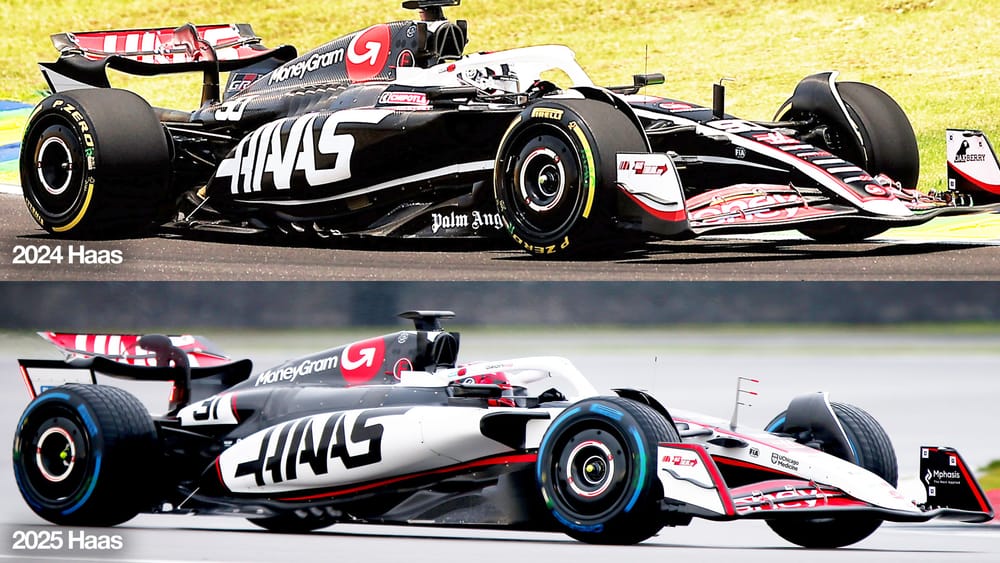The restructuring at Haas prior to 2024 produced major benefits, with team principal Ayao Komatsu turning it into an engineering-led operation.
That’s what F1 should be all-about, as while business management and a strong commercial side are important, it’s a lot easier for that side to be strong if you get results on track.
That’s all down to your engineering group, which Haas will hope has produced another step forward with the new Haas VF-25.

We often talk about cars being about evolution rather than revolution and the new Haas is certainly that. From this front view, and even the closer comparison, I am struggling to see any major differences.
I always say the devil is in the detail, but I must admit I expected just that little more externally-visual difference.

There is a very slight difference in the rear view mirror shroud, with the addition of a top and bottom horizontal vane to control the wake as it comes around that curved front surface and spills into the flat surface where the mirror lens is situated, but that’s about it.
Haas has retained the 2024-specification pushrod front suspension supplied by Ferrari, rather than taking the new pullrod version that we are expecting Ferrari to introduce.
This decision was made because of the belief that, taking into account the time and work needed to re-optimise the car around it, Haas would have potentially a stronger start to the season by keeping the existing package that it knows well.
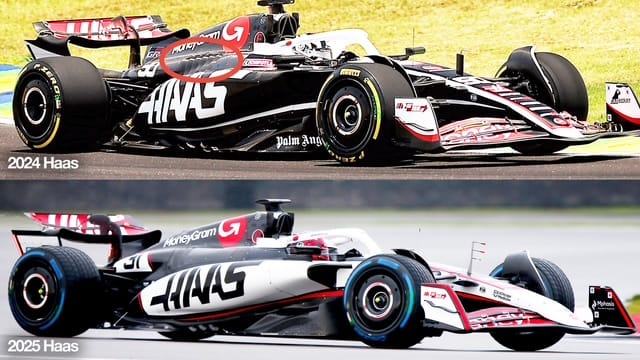
In this three-quarter and the side-on shot, I can’t really pick up many changes. Yes, the cooling louvres highlighted on the 2024 car with the red ellipse on the engine cover are more or less non-existent on the new car, but on a very cold day at Silverstone the last thing you would need is to be searching for extra cooling.
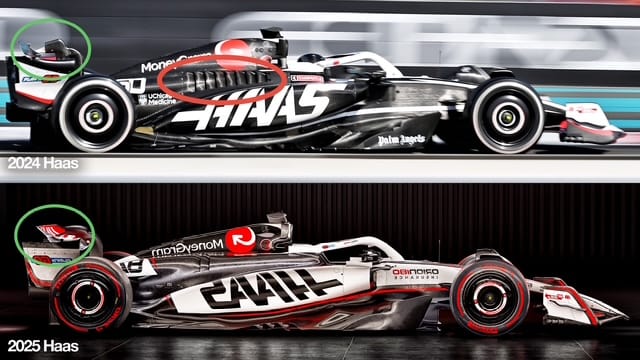
The one change I have spotted is the detail of the rear-wing-to-endplate transition. I have highlighted this area with the green ellipse, and included a cropped version.
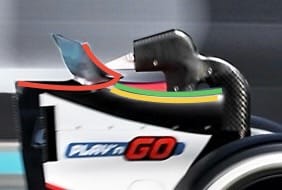
On the ‘24 car, the corner cutout is highlighted with the red lines. The cutout starts at more or less the end of the mainplane, which is highlighted with the green line. This area then radiuses into the actual endplate itself, which is highlighted in yellow.
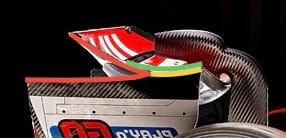
On the ‘25 car, the cutout is longer, so in effect with more or less the same length mainplane, again highlighted in green, the actual mainplane-to-endplate radius highlighted in yellow is much shorter.
This area of the rear wing is the most inefficient section of the actual wing itself. In damp conditions you can see a fairly strong vortex getting pulled along by the car. This generates a lot of drag and anything that can be done to reduce that vortex will improve the efficiency of the rear wing assembly and in turn the complete car.
As with all things in life, you have to pay the price somewhere and in this instance that will be a downforce deficit.
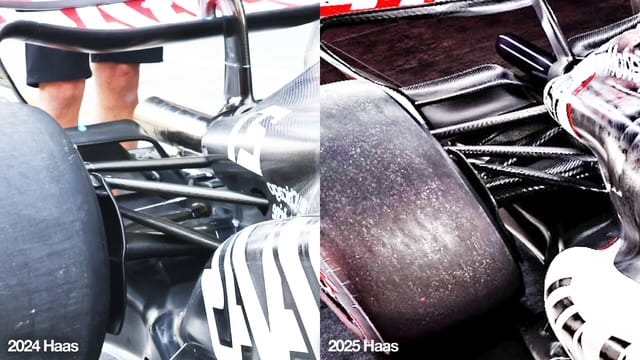
As for the rear suspension, Haas confirmed in January that it’s using Ferrari’s 2025 transmission package and rear suspension.
In these pictures, it again looks very similar to last year’s package, still pullrod-operated and with very low amounts of anti-lift on the top wishbone forward leg.
One unseen change we know has been made is to the monocoque, which is a new design for this year. This will be all about creating a little more space for the aerodynamicists to work their magic in, but is unlikely to be a big departure from last year’s design because there’s only so much you can do to squeeze the survival cell.
From the outside, it does look like a tidied up version of last year’ car. There’s nothing wrong with that as long as you had something to tidy up, but I’m a little worried that it is just not enough to allow Haas to move forward.
Standing still is actually going backwards, so let’s hope there are a lot of detail changes under the bodywork and in the underfloor area that will relate to improved performance.

